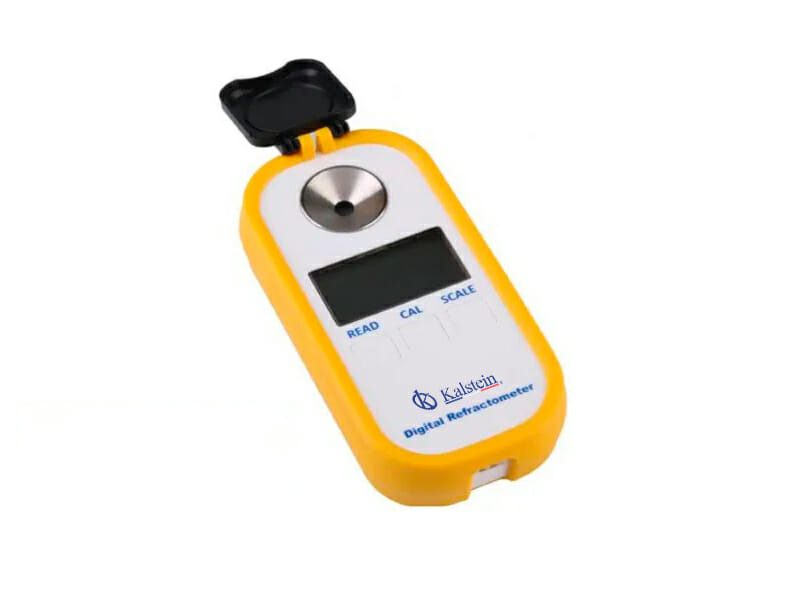The field of clinical instrumentation has seen numerous advancements, with digital refractometers leading the charge in precision and efficiency. Amongst the most sought-after devices are the Digital Clinical Refractometer YR05966 // YR05968 by Kalstein, and the Hanna Digital Refractometer HR101 by Hanna Instruments. These instruments stand as pivotal tools in clinical laboratories, with both offering unique features tailored to precise applications.
The Digital Clinical Refractometer YR05966 // YR05968 from Kalstein is engineered to deliver accuracy and reliability. With a focus on clinical use, this refractometer offers an ease of operation, ensuring fast readings and high accuracy, crucial for serum and urine protein analysis. In contrast, the Hanna Digital Refractometer HR101 is built for durability and performance in diverse settings, providing consistent results across numerous applications. Both refractometers use state-of-the-art technology, but there are subtle differences in their features and applications that warrant a closer look.
Technical Specifications Comparison
| Feature | Kalstein YR05966 // YR05968 | Hanna HR101 |
|---|---|---|
| Accuracy | ±0.1% Brix | ±0.2% Brix |
| Measurement Range | 1.000 – 1.500 nD | 1.3300 – 1.5080 nD |
| Temperature Compensation | Automatic | Automatic |
| Display | Digital LCD | Digital LCD |
| Calibration | Easy One-Point Calibration | Two-Point Calibrations |
How They Work
Digital refractometers operate by measuring the refractive index of a liquid. The Kalstein YR05966 // YR05968 model incorporates advanced digital technology for rapid and precise readings of urine and blood serum. It ensures negligible error margins with its one-point calibration and automatic temperature compensation. On the other hand, the Hanna HR101 uses a similar principle but offers a wider range for general applications, alongside a two-point calibration system to ensure enhanced accuracy over varying conditions.
Purpose of Kalstein Product
The Kalstein Digital Clinical Refractometer YR05966 // YR05968 is meticulously designed for clinical applications. It is primarily used to monitor substances in serum and urine, offering quick assessments of component concentration. The device is pivotal in diagnostics labs where accurate readings of protein content are necessary to assess patient hydration and nutritional status.
Types
The YR05966 and YR05968 models from Kalstein vary slightly, primarily in their design for different clinical settings. Both are part of a series that aims to meet diverse clinical needs. Similarly, the Hanna HR101 caters to a wide swath of testing requirements, supplementing its clinical use with capabilities suitable for food and beverage industries.
Market Price
Digital refractometers vary widely in price based on their precision and application scope. The Kalstein models, known for their high accuracy and dedicated clinical utility, typically range within a competitive range. Hanna Instruments, with its HR101, positions itself similarly, offering a robust device that is slightly less expensive given its broader but less specialized range. For precise pricing and competitive offers, visit Kalstein’s official website to generate a quote through their streamlined Kalstein Plus platform.
Frequently Asked Questions
What purity levels can these refractometers measure?
The Kalstein models can measure a refractive index up to 1.500 nD, catering to high-purity levels in laboratory samples.
Are these refractometers suitable for field use?
Both devices are compact and designed for portability, making them suitable for both laboratory and field environments.
Do they require frequent calibration?
The Kalstein refractometers feature easy one-point calibration, whereas the Hanna unit requires periodic two-point calibrations for optimal accuracy.
Advantages and Disadvantages
Kalstein YR05966 // YR05968: This model offers exceptional precision with a ±0.1% Brix accuracy, ideal for clinical environments. Its single-point calibration simplifies use, but it is slightly more specialized for specific applications.
Hanna HR101: A versatile refractometer with a broader application range and a two-point calibration system. Although not as precise as the Kalstein model, its flexibility across industries can be advantageous.
Field Use
In practice, the Kalstein refractometer excels in environments requiring rapid, repeatable measurements with high accuracy. It is particularly useful in clinical labs for analyzing serum and urine, where precision in protein concentration measurements is vital. The Hanna HR101, while less precise, finds its use in various industries requiring broad-range measurement capabilities.
Recommendations
For optimal use of the Kalstein refractometer, ensure regular calibration checks and maintain cleanliness of the optical path. It is recommended to use calibration standards and distilled water between samples to prevent contamination. The Hanna refractometer benefits from more frequent calibration given its less specialized focus.
If you are looking for a fusion of innovation and quality, you have come to the right place. At Kalstein, we offer you the luxury of exploring our exclusive catalog of laboratory equipment. We manufacture each piece with a level of excellence. Our intuitive and agile online purchasing channels are designed for your convenience, ensuring the most friendly prices. Do not hesitate any longer, we bring science to life, it is time to be part of our community. https://kalstein.de/product/digital-clinical-refractometer-yr05966-yr05968/.

